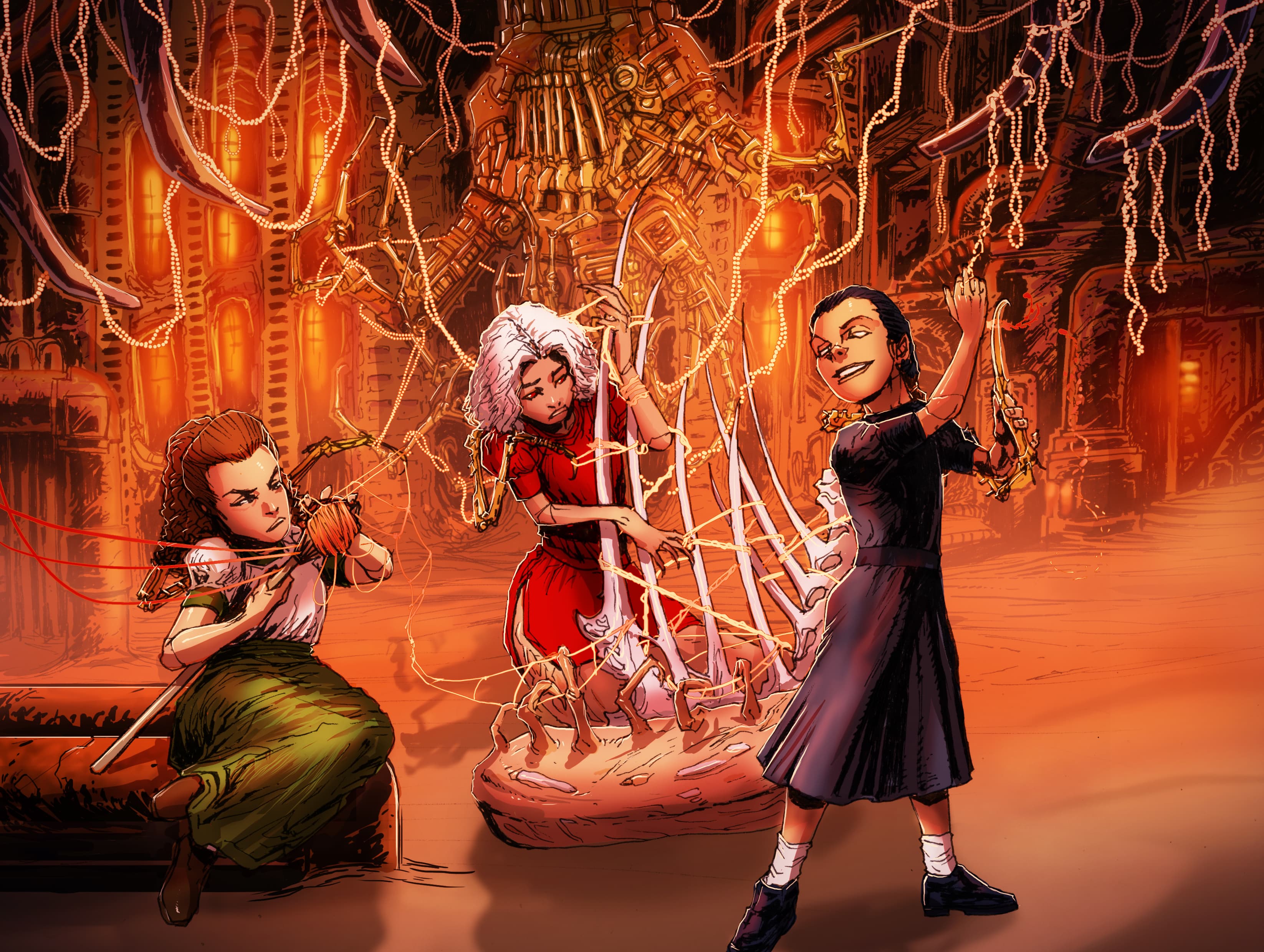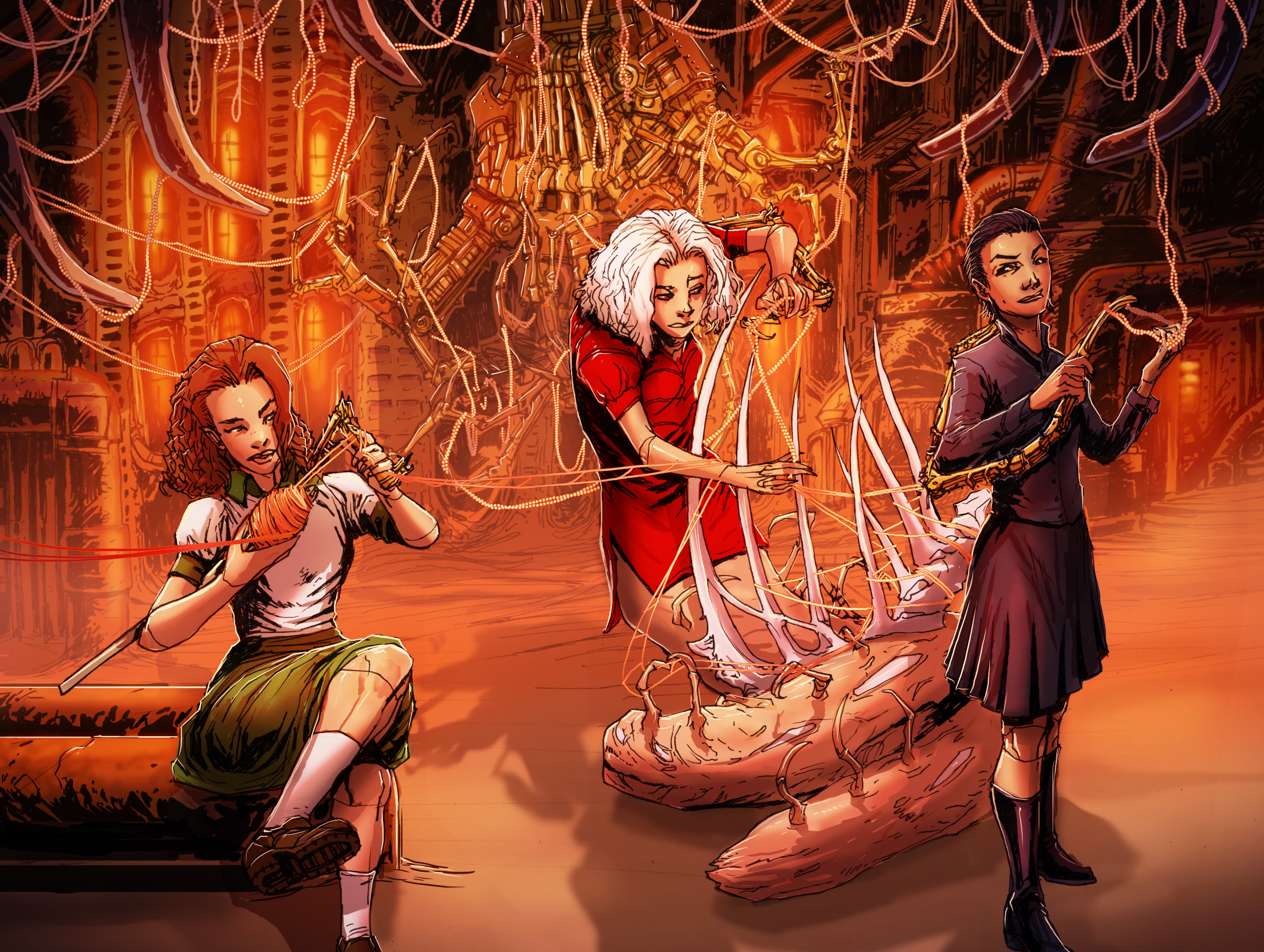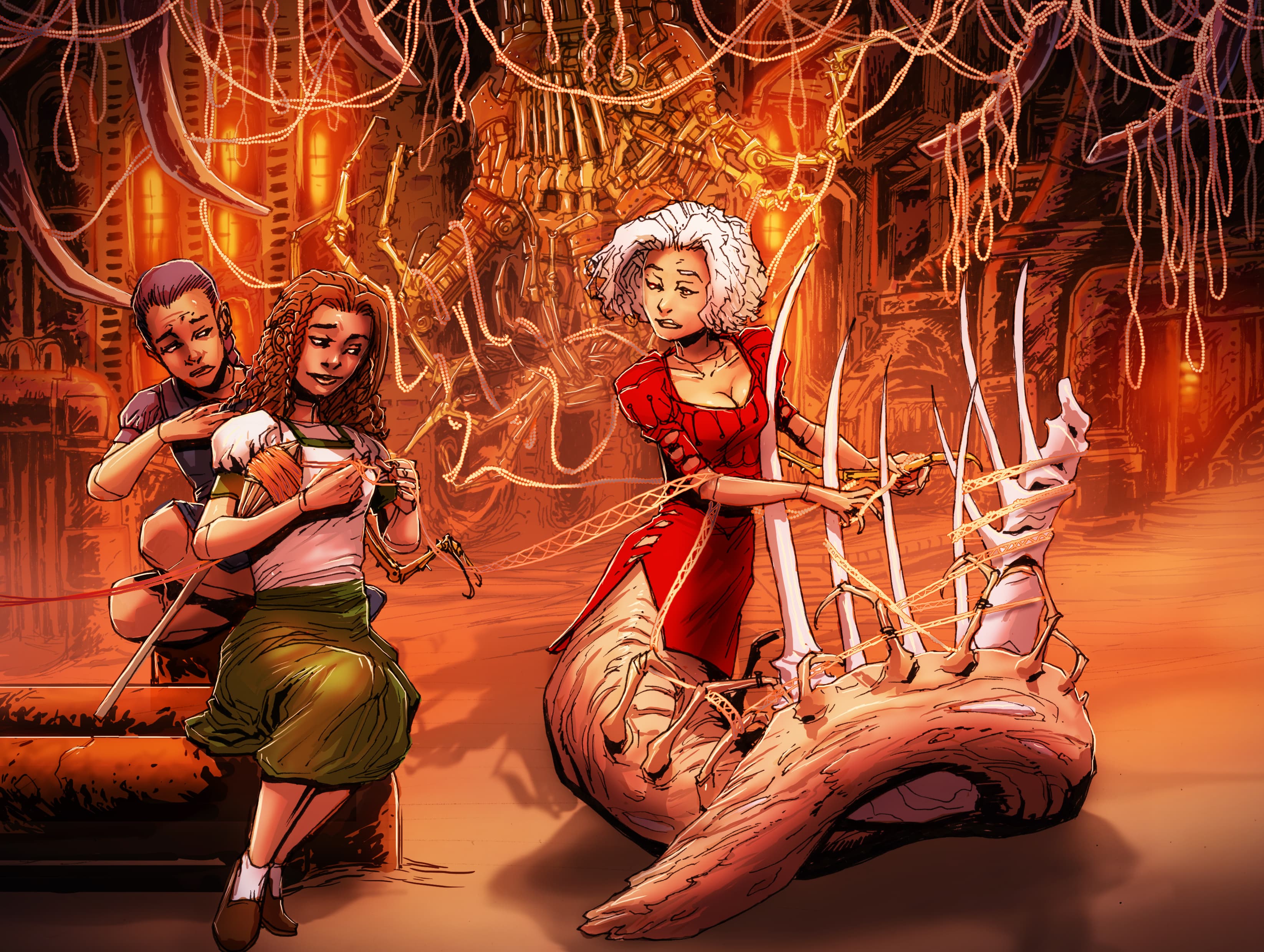Gooday everyone,
Welcome to the Deacon Corner. If you’re new here, these galleries dive into the inspirations behind the images you’ll find throughout the books posted on these pages. In these issues, I also like to share the commission details for each project, so readers can follow along with how these images came to life.
If there’s a particular piece you’re curious about, you can find all previous issues under my journal entries or linked directly beneath the images within each chapter.
Now before we begin, none of these beautiful art pieces would exist without the incredible talent of Sickjoe who is the creative force behind all the artwork in these books. Quite literally the heart and soul of this visual world. If you appreciate his work as much as I do, I encourage you to visit his gallery and explore more of his stunning creations.
Now, without further ado, let's take a look at the featured image and the commission details below.



I need a piece with all three sisters of fate plying their trade. It occurs to me that I haven’t yet requested the fateweavers doing what they do best so we’re going to fix that issue.
We’re returning to the cathedral in the oxidized garden like the Bastion Commission but this time let’s have the sisters working with the isomerase and human fate.
The Isomerase and Human Fate: I’d always envisioned the tapestries of human fate to be like strands of DNA, packaged together into tight superstructures that allow the storage of trillions in such a relatively small space. Human fate is hung from the rib vaults of the cathedral in coiled DNA-like superstructures similar to the image below:
As mentioned, these structures hang from the rib vaults like cobwebs. Once fully uncoiled, human fate is like a silky tapestry with otherworldly patterns that Nona and Morta can read using their diodes. Decima, however, is innately aware of an individual's fate even without one.
The Isomerase are mechanical fingers suspended from the ceiling of the cathedral that works to unpackage human fate into single tapestries for the sisters to work with. The Isomerase shares the same name as the protein that uncoils DNA. The instrument itself is quite literally the dead hand of the original god of fate, Iapyx and through it, the Gnatu are capable of traveling between worlds and times.
Nona: She always works with two tapestries, the mother and the father. In these scenes, she uses both of her tools, the needle and the distaff. Up until this moment, we haven’t seen the distaff yet but, much like the needle, it comes from the scar in the back of her neck and, when fully exposed, she carries it in the crook of her arm, wrapping strands from the mother and father’s tapestry to mix and make thread for the newborn's fate. She warp knits with the needle, making a lacy delicate tapestry.
Decima: Unlike Roman mythology, this version of Decima is responsible for everything following birth. Her name means “tenth” which refers to the month following birth. She measures the length of Nona’s lacy knit using an instrument that resembles a harp. A harp made from a leviathan’s bone. She plucks the strings of fate like a musician weaving the fabric further into a long, full-length tapestry that is then bound up by the Isomerase. While she mostly weaves with her hands, there are times when the little fingers along her calves and ankles get involved. Nine times out of ten, they know weaving better than she.
Morta: She’s the bull in the China shop. Morta handles fate callously and with little regard for the mortals who bear them. Morta reads fate looking for the point at which an invisible layer of sediment gathers along the tapestry. This represents a disease known as ‘the mangle’ and is the point at which a mortal must die. The knife from her neck cuts clean through causing the strange fabric to bleed as if it were flesh. She never gets to choose how a person dies only the time and place.
Three pieces: Okay, here is the kicker. I need three commissions of fate-weaving scenes with the sisters as children, teenagers, and adults. As always, you’re welcome to work at your own pace, and if you want to do one a month or try to complete them as a batch, I will leave that up to you.
Tykes: In this piece, we return to the sisters as young girls like in the Bastion piece. They work with fate clumsily and haven’t come into their own yet. Nona has fate’s weave all tangled up in her distaff like a knot in a fishing line and Decima plucks the strings along her harp like an untrained musician producing primitive fabrics and gawds awful music. Morta’s the only one who takes to her work. Ending mortal life is easy for her from the start and she teases Nona, handling mortal fabrics callously, getting a ride out of her younger sister who is struggling with her knotted line. In a sense, this scene is meant to be both heartwarming and humorous. This time represents humanity in our primitive years.
Teenagers: Here Nona and Decima come into their own with a sprinkling of the cocky arrogance that usually comes with those teenage years. Nona’s much more comfortable with her distaff and needle and Decima has learned to weave fabulous tapestries and music. Morta is mostly unchanged as, no matter how far humanity advances, death remains the same. She still teases Nona, but her younger sister has matured and doesn’t act out. This time represents humanity's Industrial Revolution and the periods of Enlightenment.
Adults: Morta, Decima, and Nona as we know them. Fully established as the sisters of fate. The only difference here is that Morta has lost her confidence in her craft. Growing dissatisfied with her domain, she no longer cuts fate and stubbornly refuses to do her job.